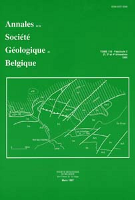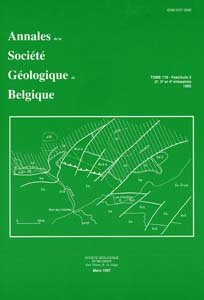- Accueil
- Publications spéciales = special publications
- Gisements stratiformes et provinces cuprifères - C...
- The copper province of northern Michigan, U.S.A.
Visualisation(s): 563 (12 ULiège)
Téléchargement(s): 720 (8 ULiège)
The copper province of northern Michigan, U.S.A.

Abstract
The late Proterozoic, Keweenawan strata of northern Michigan contain two principal types of copper mineralization, each at a distinctly separate stratigraphic position. Native copper occurs in amygdaloidal and fragmental flow tops and in reddish interflow conglomerates of the Portage Lake Lava Series. Chalcocite and combined chalcocite-native copper mineralization is found as fine-grained disseminations in basal portions of the Nonesuch Shale, a sulfide-bearing, organic-rich formation lying some 100's to 1 000's of metres above the Keweenawan lavas. An extensive red-bed conglomerate and a more local mafic to felsic flow pile lie stratigraphically between the Portage Lake Lava and Nonesuch strata. The Nonesuch mineralization of the White Pine area is also geographically centred some 60 miles southwest of the main native copper districts of Calumet and Houghton. Both copper types contain silver as a significant minor constituent.
Exploration and investigation of these two camps have taken place in large part as distinctly separate operations. The native copper ore, exploited almost continuously since 1844, occurs as irregular stratiform lodes at numerous stratigraphic levels in steep to moderately dipping beds. Many observations including those of mineral zoning, indicators of elevated metamorphic or hydrothermal temperatures, and ore controls related to relative permeabilities within and between stratigraphic units suggest that source-bed or magmatic concepts could best explain the origin of these lodes. On the other hand, the White Pine mineralization, exploited since 1954, is remarkably continuous and uniform in grade over an extensive area within strictly defined basal beds of the gently to moderately inclined Nonesuch Formation. It possesses all basic characteristics of a classic sedimentary deposit. Detailed studies in recent years have suggested, however, that mineralization of the Nonesuch may have resulted from an upward influx of cupriferous solutions which caused replacement of syndiagenetic iron sulfides and some accompanying precipitation of native copper in the presence of organic matter.
In past years concerted efforts by many individuals and organizations have produced a vast fund of information and interpretations concerning this famous copper province. Undoubtedly, a definitive solution to the occurrence and genesis of the Keweenawan mineralization will depend not only on further careful investigations at the local scale, but also on the discovery of additional regional guides such as those currently developing concepts resulting from stratigraphic and structural analyses throughout the Lake Superior basin.
Pour citer cet article
A propos de : Alexander C. Brown
Département de Génie minéral, Ecole Polytechnique, Université de Montréal, C.P. 6079, Succursale "A", Montréal H3C 3A7, Québec, Canada.





